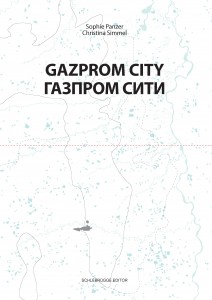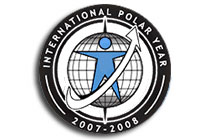March 6th – 13th , 2008; diverse venues
In March 2008 a photo exhibition about the life in the North with pictures of the Nenets artist Habecha Yaungad is shown in Vienna. Besides the photo exhibition, several lectures and film screenings took place.
These events are dedicated to the nenets, the indigenous people in Russia’s northern arctic region. Habetscha Jaungad, a nenets journalist gives impressions about his culture and life. The events were organized by AAS members.
365 Tage unter freiem Himmel: Rentiernomaden im polaren Sibirien
Im Zuge des Internationalen Polarjahres kam der Künstler und Journalist Habetscha Jaungad nach Wien, um über das Leben und Überleben im Hohen Norden Russlands zu berichten.
Der langjärige Redakteur der nenzischen Zeitung Nar”jana Ngerm und Fotograf war in Wien in mehreren Diskussionsveranstaltungen zu sehen und eröffnete eine Ausstellung mit eigenen Fotografien aus seiner Heimat, dem Land der Nenzen.
Photo exhibition: “365 Tage unter freiem Himmel” mit Bildern von Habetscha Jaungad
6. – 13. März 2008; Russisches Kulturinstitut, Brahmsplatz 8, 1040 Wien
Unter der Anwesenheit des Künstlers findet am Donnerstag, dem 6. März 2008, um 18 Uhr die Vernissage statt.
Podiumsgespräch mit Kurzfilm: “Die indigene Bevölkerung in urbanen
Gebieten des Autonomen Kreises der Jamalnenzen”
Montag, 10. März 2008, 19.30 – 20.30 Uhr, Institut für Slawistik der
Universität Wien, Spitalgasse 2, Hof 3, 1090 Wien
Habetscha Jaungad wird anwesend sein und über das Leben in seiner Heimat berichten (Veranstaltung in russ. Sprache).
Diskussionsveranstaltung mit Film “Leben im Autonomen Kreis der
Jamalnenzen und das Internationale Polarjahr 2007-08”
Dienstag, 11. März 2008, 15 Uhr Institut für Kultur- und Sozialanthropologie der Universität Wien, Universitätsstr. 7, NIG, 4. Stock, 1010 Wien
Prof. Peter Schweitzer (Univ. of Alaska Fairbanks) berichtet über das Internationale Polarjahr (2007-2008) und Habetscha Jaungad über das Leben in seiner Heimat (mit Film).
Film und Diskussionsveranstaltung
Mittwoch, 12. März 2008, 18.30 – 21.00 Uhr, Gallery M – Vienna, Arctic Inuit und Native Indian Fine & Decorative Arts,1080 Wien, Strozzigasse 47
Filmpräsentation mit Begrüßung des Fotografen Habecha Jaungad
Habetscha Jaungad steht hier dem Publikum für Fragen zu Verfügung und
berichtet über das Leben in seiner Heimat, dem autonomen Kreis der Jamal
Nenzen (mit Film).
Ein Veranstaltungsreihe der Arbeitsgemeinschaft Arktis und Subarktis
in Kooperation mit:
Bezirksvertretung Wieden
Institut für Slawistik, Univ. Wien
Gallery M
Ges. für bedrohte Völker
Wien Kultur
Inst. f. Kultur- und Sozialanthropologie, Univ. Wien
Institutsgruppe Slawistik, Univ. Wien
Russisches Kulturinstitut Wien
RAIPON
Aut. Gebiet d. Jamalnenzen
Downloadmaterialien zu den Veranstaltungen:
Postkarte (1,9 Mb)




 The International Council for Science (ICSU) and the World Meteorological Organisation (WMO) have devoted the period from 1st March 2007 until 1st March 2009 to the polar regions of the world. Arctic and Antarctic are in focus of a comprehensive scientific programme, which even stretches over two years this time – to give scientists the opportunity to conduct research in all seasons of the year on the northern and southern hemisphere.
The International Council for Science (ICSU) and the World Meteorological Organisation (WMO) have devoted the period from 1st March 2007 until 1st March 2009 to the polar regions of the world. Arctic and Antarctic are in focus of a comprehensive scientific programme, which even stretches over two years this time – to give scientists the opportunity to conduct research in all seasons of the year on the northern and southern hemisphere.